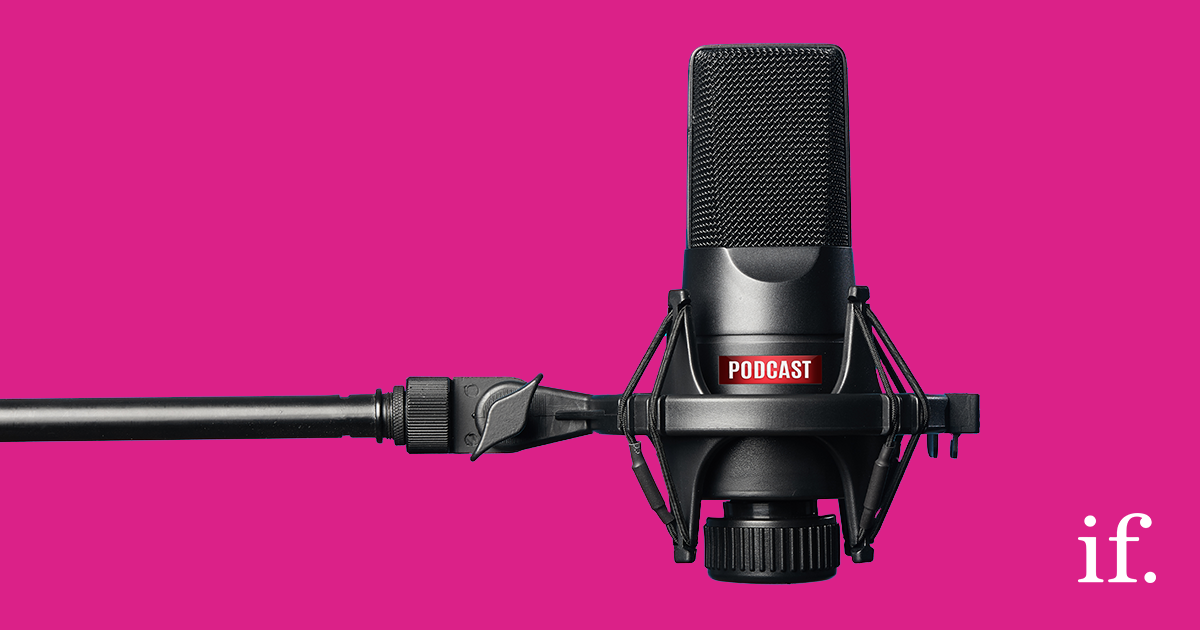Episode 15: How to manage a crisis on social media
From the planning, processes creation and policy development you may need to undertake, we’re going to explore differentiating between issues management and crisis management and knowing the actions you need to take should a crisis occur.
‘Plan for the worst and hope for the best’ is the age-old mantra. So why are so many brands hoping a crisis doesn’t ignite on social? In this episode, CJ is discussing the planning and prep you need to do, but hope to never utilise.
If you’re after more know-how to break the social boring, subscribe now.
Full Transcript
Welcome to the Serious Social podcast, created by the straight-talking social media experts at immediate future.
‘Plan for the worst and hope for the best’ is the age-old mantra. So why are so many brands hoping a crisis doesn’t ignite on social? In this episode, CJ is discussing the planning and prep you need to do, but hope to never utilise. Recorded live on Facebook on Friday 19th June 2020.
CJ –
Hello and welcome – thank you for joining us. This morning, we’re going to be discussing how to manage a crisis on social media. Over the next ten minutes or so I’m going to walk you through everything from the planning, processes creation and policy development you may need to undertake, we’re going to explore differentiating between issues management and crisis management and knowing the actions you need to take should a crisis occur. This introduction to managing a crisis on social media is about helping to tee you all up to the tasks you may need to undertake to ensure the commercial impact felt when a crisis occurs is minimal.
The information I’m sharing with you has been cultivated from more than a decade of working on some of the most prominent crisis that has taken place with some of the world biggest and most prominent brands. Some of those crises you would undoubtedly be aware of as they became major cross-continent news. As is usually the case with crisis management, stringent NDAs prevent the disclosure of finite detail, but what I can tell you is I’ve worked on some of the most demanding and saddening events. Incidents that have caused a loss of life. Other crisis that has prevented family members from getting home to loved ones at Christmas. Projects that have dealt with major product recalls, disruptions due to volcanic eruptions and even brands dealing with data hacks and data thefts.
But the projects we’re most pleased with are those that don’t become front-page news. The incidents that would have the potential to become a media story creating detractive narratives that impact revenue. And that’s the best place to start – understanding what is and is not a crisis.
Even the most automated of businesses involve humans in some aspect. Humans aren’t fallible. We make mistakes. Machines have the potential for unprecedented error, football fans will have seen on the resumption of the Premier League football calendar this week, the opening game had a major tech failure in it. The goal-line technology failed to record a clear goal. The point being, things go wrong. Mistakes happen. These are issues that we need to manage and moments requiring course-correcting. Issues can range from accidental content being posted to a brand page rather than a personal feed. Assuming the content isn’t too controversial, this probably qualifies as an issue to manage. Other issues can be rogue commentary published into the public domain from former disgruntled employees. Angst from product failure is an issue. Largely, these are all day-to-day business or customer issues that need managing. They’re not crises. Customer Service issues occur daily. The volume of complaints doesn’t increase because you have social media channels. The same issues and problems happened, they would have just been channelled differently in the past. Social Media did two things for customers services: 1) created a channel of preference for some customers who don’t want to endure long call times. They would rather register a query or complaint and sit back doing other things until it’s resolved. And 2) it made complaints more visible. Visible complaints only become problematic if your product truly defects and you’re clearly profiteering off a failed concept affecting high volumes of people, or, you’re just not dealing with the complaints. A visible complaint is an opportunity for you to showcase your customer service and problem-solving skills. Issues management. The vast majority of issues management can be controlled by the creation, implementation and company-wide adoption of a robust social media policy. Creating a document with clear guidelines for appropriate use, acceptable conduct, brand expectations, privacy and confidentiality guidelines, tone of voice and brand guidelines can prevent some of daft happenings on social media.
A crisis is classified as an incident that has the potential to significantly impact revenue or commercial value. Typically, those incidents have a significant and comprehensive consumer and business impact.
Examples of crises would be United Airlines forcibly removing a passenger. Fellow passengers were so aghast at the handling and overtly aggressive nature of staff that they filmed and posted the entire occurrence. The gross negligence by staff and the perception that United adopt such aggressive behaviours resulted in passengers moving to other airlines. The video lit up Social Media and was shown on broadcast news channels within hours. Commercial impact and significant reputation damage were afoot.
Pepsi made those gross errors some years ago using the #BLM posting an advert of Pepsi cans being handed out by people of colour. Understandably, there was widespread outcry with people justifiably accusing Pepsi of exploiting the #BLM to profiteer. Again, Social Media helped this brand realise their wrongdoing. Leadership who were unaware of the advert plans were embarrassed and had to remove the advert within hours of deployment. Pepsi made news headlines for all the wrong reasons. Again, commercial impact and significant reputation damage were afoot.
And lastly, Adidas a few years ago foolishly used the copy ‘congrats, you’ve survived’ in copy framed at marathon finishers. Why was that foolish? Because the marathon in question was the Boston Marathon- the very marathon previously affected by terrorism. Remember the bombing? Instant news headlines. Commercial impact and significant reputation damage were afoot.
Each of those instances caused mass backlashes with society calling for brand boycotts. These were moments of crisis. So why are those brands faring ok today? Well, because they clearly had tangible crisis plans. They knew what immediate action to take. They knew who to contact. They followed their action plans and escalation trees. Mistakes happen – even abhorrent behaviour can be forgiven if the right contrition, apology and corrective tutoring are deployed. In short, each of those brands acknowledged their wrongdoing. They apologised and committed to learning from their failures. They committed to being better and taking specific and detailed action.
This week, we saw a very sad incident involving the US Airforce. Some of you may have seen the news about a newlywed pilot’s plane crashing 75 nautical miles off the northeast coast of England. The pilot of the F15 fighter jet lost his life. Earlier that day, the RAF had posted an image of three F15 jets flying in formation, with the headline ‘flying into Monday like….’ – a headline we see on many images or memes. But on Monday, a headline that in the context of the tragic incident had greater meaning and impact. Within minutes of the plane going down, that content was removed. The RAF reverted to its action plane detailing the checks to make and subsequent action to take. Part for their action plan was clearly to ‘Secure their Feeds’ assessing what content was in feed and scheduled to be published. Removing relevant content and embargoing distribution of the same is a key early task on any Action Plan. The tragic incident was already making headlines, but additional stories would have also played out in media had posts not been secured. No one can predict tragic outcomes. No one will chastise you for not having a magic ball that can predict the future. Audiences, however, will chastise you if you’re not making smart decisions about adverts and content in circulation once a crisis occurs.
The mantra of crisis management is ‘plan for the worst outcome and hope for the best’. The RAF had clearly planned for that worst-case scenario. Sadly, I hear of too many brands hoping a crisis doesn’t happen and their lack of planning and preparation results in slow action and a scaling crisis to manage. Chaos reigns. So, what do brands need to have locked away in a draw for those moments we all hope never happen.
The Crisis Management Action plan is the document staff access and follows when emotions are in an escalated state. You’re mitigating against panicked staff not being able to think clearly under pressure. Ahead of time you’ve done the thinking for them giving them a step by step playbook. Crisis Action plans typically detail six pillars:
- Identification of crisis: detail the criteria to help staff confirm a crisis is happening. Sometimes overexuberant staff can mistake issues for crises. Those issues may need flagging to seniors, but you would not want to wake up the company unnecessarily because someone misread a situation. Define what warrants a crisis, be it, the volume of people expressing anger, media coverage, or significant incidents resulting from your product or service failure. Have clear detail so even the most junior member of staff can determine yes, this is a crisis or, no, it’s an issue to manage.
- Notification: This is your escalation tree. Who do people contact in the first instance? What are their emergency contact numbers? Have a clear tree to carry information clearly and swiftly through the organisation and to the top of the business. One of the smartest decisions I made for a major airline, during Ash Cloud, was getting their CEO in front of broadcast cameras immediately offering the latest information available – this wasn’t to appease those at the airport, but to get clear information out to the public who may be about to head to the airport making the people management task harder for airport staff. Rival airlines were several days behind in doing the same. So, who do staff notify and who loops in leadership teams? Have an escalation tree.
- Internal Communication Plans: Who and how do you issue internal updates. During a crisis, the flow of information to staff is essential. If media and online are raging about your business, staff will be affected. Communicating what is happening and how it is being resolved is key – especially if you’re in the wrong. Excellent leaders know when to do the right thing and when to issue an apology.
- External Communication Plans: define your spokespeople. Ensure they are media trained. The worst crisis I endured was for a brand who’s wrongdoing resulted in staff loss of life and local ecology being decimated. In that situation media will doorstep staff, throwing a mic in their face for comment – IF you’re not engaging and updating media in a structured fashion. If your Social channels and staff are silent, then media will hound you. Define spokespeople, control their narrative and issue video statements or formal written statement to social, online and media. Keep communications open and clear.
- Emergency contact numbers for all key staff. We all move homes or change mobile operators. Keep this up to date.
- Define Approval process for outgoing content. Have an oversight team to review everything during your crisis period. For example, if you’re an airline, publishing adverts if planes are grounded is a daft thing to do. It just adds fuel to the fire and annoys those who can’t travel – they rant even more and understandably so.
- Take action fast.
To create an action plan, you will need to get in a room and outline every eventuality that you do not want to happen. Fair warning, it’s a cynical session and you’re looking at a lot of negative happenings. By mapping each of the 7 steps discussed, you will be fuelling your team with the right and swift action to take. The outcomes brainstormed also become the triggers for your comms teams to start drafting messaged and responses to lock away.
A lot of what I’ve discussed relates to pretty heavyweight crises. A smaller crisis should still follow the same plan, but you may only go through a few of the steps, and then as soon as statements are issued – even if they are apologies from the CEO, (going back to the examples spoken about earlier) – then your crisis may curtail. Speed is so important in curtailing impact. On average, brands spend a day debating the crisis before they discuss what action to take. It can be days before tangible action is taken, all because the planning was omitted.
Be smart, create an action plan, and, know what outside support you should have on standby to help.
If you’re after more know-how to break the social boring, subscribe now and check out the show notes for links to our website and social profiles.
If you’re after more know-how to break the social boring, subscribe now and check out the show notes for links to our website and social profiles.




